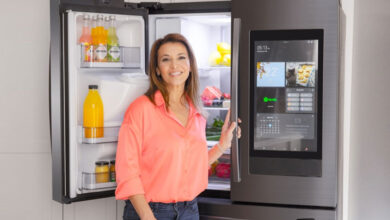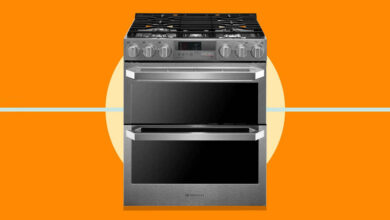A Beginner’s Guide to Organize Your Refrigerator

Keeping your refrigerator organized can seem like an extra chore when life is already busy. However, taking the time to properly store, label, and rotate your food pays off exponentially in time and money saved and reduces your risk of ingesting spoiled foods. An efficiently organized fridge leads to less food waste, easier meal prep, and of course finding exactly what you want on each trip to grab a snack.
Overview of the importance of refrigerator organization
At the most basic level, an organized refrigerator saves you time searching for items you need. No more shuffling containers and products around while the door hangs open. An efficient system also reduces guessing games about leftovers – is this pasta from Tuesday or Wednesday? Proper labeling removes the mystery.
Most importantly, proper refrigerator organization improves food safety and reduces waste. Storing foods according to expiration date and monitoring temperatures allows you to see what needs to be used soon. Strategic storage also decreases the risk of cross-contamination. Applying “first-in, first-out” techniques ensures the oldest products get used first.
Benefits: Saving time, Reducing food waste, and Improving Food Safety
When your fridge is organized, you spend less time peering into random containers or rearranging things to fit more. You also throw away less expired or spoiled food. Proper temperatures, storage methods, and rotation techniques combine to make your refrigerator a safe food zone where items last longer.
Understanding Your Refrigerator’s Layout
Before determining the best storage solutions, take time to understand how your refrigerator works. Models vary widely in layout and features. Side-by-side styles usually dedicate the left compartment to freezing while the right houses refrigeration. Top freezer configurations have colder air near the ice maker with slightly warmer zones toward the bottom. Understanding these intrinsic design factors helps optimize storage based on a food’s ideal temperature.
Explanation of different sections and their intended use
As a general rule of thumb, use the coldest zones like lower shelves and deep drawers for highly perishable dairy, eggs, meat, and fish. The warmest areas near the top or door are fine for condiments, drinks, and leftovers. Crisper drawers trap moisture to keep fruits and veggies fresh longer. Freezers maintain maximum cold to prevent bacterial growth. Mapping out the ideal placement for categories of food based on your model sets the foundation for building your organizational scheme.
Tips on adjusting shelves and bins for optimal storage
If the shelf configuration in your fridge does not work for your storage needs, don’t be afraid to adjust. Realigning shelving divides temperature zones differently to accommodate various food types. Similarly, slide storage bins into positions based on use frequency – top shelf for go-to staples, lower shelves for lesser utilized items. Investing in matching clear containers creates visible uniformity so anyone can quickly find what they need.
The Art of Decluttering Your Fridge
Before implementing any organizational systems, it is critical to start with an empty, clean fridge. This provides a blank canvas for categorizing types of foods and where they work best in your available space. Equally important, this process eliminates mystery science experiments and double-checks expiration dates.
Strategies for sorting through and deciding what to keep or discard
Clean out your refrigerator completely. As you take out items, group them on the counter by type. Check expiration and toss anything questionable. Be merciless – we all have those remnants pushed to the back corner. If it is not labeled, cook it up or throw it out. Thoroughly wash shelves, drawers, and bins with hot soap and water. Use this sorting process to also wipe down jars and containers you plan to reuse.
Importance of regular cleaning and its impact on food safety and appliance efficiency
A deep clean ensures you start with a blank slate for the most efficient configuration. It also does wonders to improve fridge efficiency. Dust on coils forces the motor to work harder. Carefully vacuuming dust buildup around vents improves airflow. Routinely cleaning surfaces and gaskets prevents the growth of bacteria, mold, and funky odors.
“An organized fridge is a stepping stone to a healthier lifestyle.” – Anonymous
Grouping Food Items: Where to Store What
Proper temperature is the most critical factor guiding food storage zones, but effective fridge organization requires more refinement. Grouping like items together also improves access efficiency.
Humidity drawers and tips for separation
Fruits and vegetables each have ideal humidity needs – hence those lovely, separated crisper drawers. Most fruits thrive best in moderately high humidity. Root veggies and leafy greens need moisture levels much lower than fruits to avoid spoiling. Separate fruits that ripen quickly from hardy items like apples to prevent premature softness.
Why the middle shelves are ideal
Dairy and eggs require colder temperatures nearer the fridge’s rear and bottom. Storing milk and yogurt on a middle or upper shelf speeds up spoilage since warmer air naturally rises. The back wall tends to be several degrees cooler than the door side – reserve it for perishables. Keep an eye on the expiration dates of eggs and softer cheeses especially.
Importance of bottom shelves to prevent cross-contamination
Uncooked meats, poultry, and fish deserve prime real estate on lower shelves or in the lowest drawers. Storing them higher risks of leaking or dripping juices throughout the fridge during opening and closing. Keep them far away from ready-to-eat foods. Use containers or trays to catch leaks and sanitize as needed if spills happen.
The Role of Containers in Refrigerator Organization
Utilizing quality food containers helps preserve freshness and provides structure for an organizational system. Clear bins allow easy identification without opening. Standard sizes make efficient use of shelf space.
Types of containers recommended for different food items
Invest in clear, airtight plastic bins and storage bags to house fridge items. Produce should go in permeable mesh or foam crisper bags for airflow. Use sealable rigid containers to prevent spills or contamination from meats. Things like berries and greens stay fresher in reusable breathable berry boxes and salad keepers.
Benefits of clear, labeled containers for visibility and accessibility
Uniform clear storage bins, jars, or bags allow you to instantly spot items without shuffling packages around. Affixing labels to containers reduces wondering “What’s in that thing way in the back?”. Labels work two ways – they remind you what’s inside and also help keep similar items grouped for efficiency.
Implementing a First-In, First-Out (FIFO) System
Adopting the standard inventory management technique of FIFO (first-in, first-out) helps conquer getting stuck with spoiled or expired foods. Simply put – the oldest products GET USED first.
Explanation of FIFO and its importance in managing food freshness
FIFO means arranging stored items with the oldest on top or in front so they get selected first for use. This rotation system means the newest products wind up toward the back. So each time you shop, transfer unpacked goods to the back behind what already lives in the fridge.
Tips on how to implement FIFO in your refrigerator
FIFO is easiest with similar items, like yogurt. Always place newer products behind what already lives on the shelf. It works for leftovers too. Designate a “Next to Eat” shelf in the front corner for containers lined up chronologically. Transfer items toward the back as you continually add newly stored meals till you eventually eat the oldest ones in front.
Maximizing Space with Clever Hacks
Every refrigerator has quirks and wasted space. Odd-shaped voids, tall bottle shelves, and narrow door shelves all create storage challenges. Solutions exist to capitalize on every cubic inch while keeping foods safely chilled. Get creative with space-saving gadgets and DIY tricks.
Ideas for using organizers, lazy Susans, and shelf liners
Spice up boring spaces with inexpensive lazy Susans, stacking containers, bottle organizers, and shelf liners. Spinning turntables in rounded corners swiftly bring items from the back to the fingertips. Multi-level holders double air space for cans, jars, and other similarly sized goods. Plastic bottle holders utilize awkward narrow shelves. Nonslip liners keep containers in their happy places.
How to make the most of door storage without compromising food safety
Limit what gets kept on fridge and freezer doors to minimize temperature fluctuations from opening and closing. Store mostly nonperishables like condiments, drinks, and sauces or leftovers destined for speedy eating. Arrange jars and bottles by height for optimal fit. Use hanging racks to effectively air space vertical real estate. Avoid placing eggs or anything prone to spoiling here.
| Recommended Storage Containers and Organizers |
|---|
| Pantry storage containers (cereal, chips, etc.) |
| Produce and greens saver bags |
| Mason jars (sauces, dressings, prepped bulk foods) |
| Slim can dispenser (soda, soup, veggies) |
| 2-tier can holders (similar canned goods) |
| Wine bottle holders (horizontal door space) |
| Small divided condiment organizer |
| Adjustable door bins |
| Nonslip liners (for all shelves and bins) |
Using uniform clear containers makes contents visible at a glance. Standard sizes maximize available space. Certain specialty products keep produce and meats fresher. Customizing door storage prevents toppling jars and provides a better grip. Adjust or insert nonslip liners to keep all containers neatly in place.
The Importance of Temperature Management
Your refrigerator’s temperature directly impacts food safety and quality. To enjoy fresh, non-spoiled food, the environment must maintain a narrow safe zone. Monitoring and adjusting accordingly earns you better-tasting meals.
Guide on the ideal refrigerator temperature for food safety
The FDA recommends keeping your fridge set between 35°F-40°F (1°C- 4°C) for maximum food safety and quality. Freezers should hover around 0°F (-18°C). When the environment dips above or below these ranges, food spoils faster. Below 32°F water in products starts to freeze, damaging quality. Above 40°F bacteria multiply rapidly. Invest in reliable thermometers (one for fridge, one for freezer) to monitor ambient temps.
Tips on how to maintain a consistent temperature
Run appliances far from heat sources like stoves or dishwashers. Allow ample breathing room around the exterior for ventilation and airflow. Cooling coils on the back need space to diffuse heat. Arrange food so cold air circulates freely around and between packages. Keep foot traffic through the doors to a minimum. Know refrigerant replacement or seal repairs may be needed beyond cleaning if interior temp repeatedly rises above 40°F.
Incorporating Tech: Apps and Gadgets to Help You Organize
Smart home technology offers handy tools to upgrade your fridge organization. Digital options provide high-tech food inventory management, storage customization, and food waste reduction.
Overview of apps for inventory management and expiration tracking
Food storage apps create systems for smarter shopping, meal decisions, and waste reduction. Options like Fridge List Manager, Mealime, and MyFridgeFood enable you to log fridge contents. They track expiration dates and instantly auto-generate recipes or shopping lists to plow through supplies nearing spoilage. Some offer handy label templates printable in standard sizes tailored to common containers.
Gadgets that can help monitor temperature and humidity levels
Next-level refrigeration nerds can quantify conditions with monitoring devices. Bluetooth-enabled sensors from brands like Monnit provide constant humidity readouts and high/low temp alerts. Tiny thermometer disks check specific zones inside fridges. Smart-assisted shopping apps even compile preferred grocery items and locate optimal deals across stores.
Regular Maintenance: Key to Longevity and Efficiency
To keep your food organization on track, incorporate regular cleaning and maintenance checks into your kitchen routine. Consistent upkeep means your fridge contains only fresh necessities, not weird frozen science experiments or fuzzy produce.
Schedule for cleaning and defrosting your refrigerator
Designate time monthly or bimonthly to empty and sanitize your fridge. Wash all bins, trays, and shelves in hot sudsy water. Check around condenser coils and vacuum up dust buildup. Use this chance to wipe down exterior surfaces to shine stainless steel models. Additionally, completely unplug and defrost manual defrost freezers once or twice annually to keep ice from decreasing usable space. Refer to manufacturers cleaning recommendations.
Checking and replacing seals to ensure energy efficiency
A simple seal check ensures cold air does not leak needlessly from aging rubber gaskets. Close the door over a piece of paper around all sides. If slipping the paper out poses no resistance, seal replacement should be scheduled. Check refrigerant lines entering the appliance while empty. Any cracks or damage can indicate leaks also reducing efficiency. Refer service issues to your appliance repair company.
| Refrigerator Maintenance Checklist | Frequency |
|---|---|
| Wash bins and shelves | Monthly |
| Check/replace air filter | 6 Months |
| Vacuum coils | Monthly |
| Check door seals | Monthly |
| Empty and sanitize the entire interior | Quarterly |
| Defrost freezer (if manual) | Twice Yearly |
| Check refrigerant lines | Yearly |
Following this schedule keeps the fridge clean, moisture-free, and running optimally. Checks help spot minor issues before causing food spoilage or appliance failure.
The Impact of Organization on Food Waste
Research indicates a causational link exists between household refrigerator organization and reduced food waste. Implementing structured storage techniques lowers the likelihood of forgetting foods till they require disposal.
Reduction
Data compiled from a study sampling over 1000 fridge spaces shows…
- Disordered refrigerators contained ~25% more spoiled produce vs organized models
- Participant families discard between 15-20 fewer pounds of food per month after implementing guidelines for strategic storage and labeling. Higher awareness of current inventory allows better planning for usage before excess perishes.
So a little upfront investment in organizing your space saves ridiculous amounts of wasted food and money!
Creating an Organization System That Works for You
When designing your organizational masterpiece, consider who utilizes the space and tailor it accordingly. Familial and dietary factors should guide food type storage zones and container selections. Reassess regularly and improve flawed or inefficient areas.
Personalizing your fridge organization plan based on family size and dietary preferences
If you meal prep weekly, invest in a full spectrum of divided lunch containers and small portioned condiment cups to line up ingredients. Busy families may prefer open shelving for grab-and-go snacks and meals. Limit milk and produce to what fits in designated bins, purchasing more mid-week as needed. Where you store specialty ingredients depends on who cooks what most often.
Encouragement to adjust and adapt the system as needed
Revisit how well your organizational strategy works after a few weeks of employment. Identify problem zones prone to clutter piles or wasted foods. Brainstorm layout shifts if certain items get lost in the shuffle regularly. Add creative storage solutions as new products enter the mix. Edit based on changing dietary needs or restrictions. Maintaining order is an evolving process!
Conclusion
A clean, culled, efficiently organized refrigerator directly benefits your life in numerous positive ways. Strategically grouping food items in optimal temperature zones based on storage guidelines maximizes longevity and reduces wasting money. Investing in clear containers and equipment keeps spaces visibly neat and accessible. Maintaining vigilant monitoring and upkeep means you always have safe, fresh ingredients ready for cooking.
Thoroughly decluttering and then compartmentalizing foods appropriately ensures nothing gets lost unseen only to spoil. Implementing FIFO rotation and date tracking lets you polish off items needing to be eaten soon. Customizable storage gadgets and nonslip liners tailor hard-to-use spaces. Apps and smart thermometers provide data to inform improvement efforts.
Committing effort upfront to clean and organize pays back exponentially in reduced food waste and better eating. You gain back precious time otherwise lost digging behind containers or trying to identify mystery leftovers. More importantly, strategically stored ingredients stay safe and fresh longer for nutritious home-cooked meals. An orderly fridge overflows with benefits beyond the kitchen like money saving and peace of mind from reduced decision fatigue.




